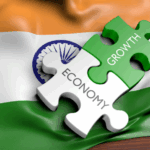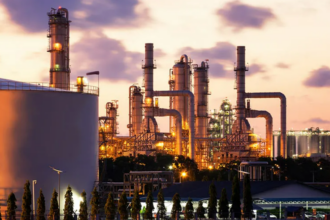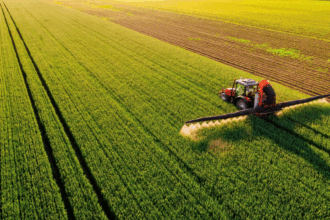The history of making of a global world tells us how people, goods, ideas, and cultures had moved across countries and continents for centuries. From the ancient Silk Routes to the discovery of the new lands, from the spread of food crops to the rise of colonial empires, every stage has played a role in linking distant societies.
This chapter highlights how economic exchanges, migrations, wars, and international institutions gradually shaped the interconnected world we live in today. Understanding the global world is essential to grasp how countries collaborate and compete in trade, technology, and communication in the modern era.
Introduction
1. Meaning of a Global World
- Refers to the interconnection of different parts of the world through trade, migration, cultural exchange and economic activities.
- In today’s global world, economies, politics, and cultures are interdependent. The global world allows people, goods, and ideas to move across borders more easily than ever before.
- Globalization today is not new, it’s been happening for centuries.
2. Importance of studying Global World
- Helps us understand how the modern world economy, culture and societies developed.
- Shows how local and regional events were connected to larger global processes.
3. Historical Connections
- From ancient times, people have traded goods, shared ideas, and migrated.
- Example: Silk Route connected Asia, Europe and Africa for centuries.
4. Key Themes of the Chapter
- Pre- Modern World: Early linkages through trade, migration, conquest and cultural exchange.
- Nineteenth century (1815-1914): Economic, political and cultural changes that shaped global relations.
- Inter-war economy (1914-1945): First World War, Great Depression, Second World War.
- Post-War World (after 1945): Growth of international institutions, globalization and modern economy.
5. Aim of the chapter
- To understand how the world became interconnected over time.
- To study the positive and negative impacts of globalisation on different societies.
Topic-1: Silk Route Links The World
1. What are silk routes?
- Ancient trade routes connecting Asia, Europe and Africa.
- Named after the lucrative trade of Chinese silk which was carried along them.
- Helped in making a more interconnected, global world.
2. Nature of Silk Route
- Land routes: passed through Central Asia, linking China with West Asia and Europe.
- Sea routes: connected China, Southeast Asia, India, Arabian Peninsula, and East Africa.
3. Goods Traded
- From China: Silk, porcelain
- From India: spices, precious stones
- From Europe: Wool, gold, silver
4. Cultural Exchange
- Spread of ideas, knowledge, religions and cultures (example- Buddhism from India to China).
- Enabled cross-cultural contacts between distant regions.
5. Historical Significance
- Economic- Boosted trade and prosperity along the route.
- Cultural- Mixed traditions and created cosmopolitan societies.
- Political- Encouraged diplomatic ties and expansion of empires along trade paths.
Topic-2: Food Travels- Spagetti and Potato
1. Food as a part of Global Exchange
- Just like trade and culture, food items also travelled across continents.
- These exchanges shaped local cuisines and cultures.
2. Spagetti
- Many people think Spagetti is originated from Italy.
- But, it is believed that noodles were first made in China.
- Through trade and cultural contacts (Silk Route), noodles reached Europe and transformed into pasta.
- Shows how Asian food influenced European cuisine.
3. Potato (From Americas to Europe and Asia)
- The potato, maize, tomato and chilli were introduced to Europe and Asia from the Americas (after Christopher Columbus’ voyages).
- Potato became a cheap, nutritious food crop, feeding the poor in Europe.
- Helped reduce famines and supported population growth in Europe and Asia.
4. Impact of new crops
- Enhanced agriculture and diets worldwide.
- Europe: Potato became staple food in countries like Ireland, Poland and Russia.
- India: Chilli, Maize, and Tomato became essential parts of Indian cuisine.
- Changed eating habits permanently across the world.
Topic-3: Conquest, Disease and Trade
1. European conquests (16th century onwards)
- After Christopher Columbus discovered Americas (1492), European powers (Spain, Portugal) began conquering new lands.
- Conquests brought precious metals, crops and resources to Europe.
- America became the centre of trade, wealth and colonization.
2. Role of disease
- Europeans carried smallpox to the Americas.
- Indigenous (native) people had no immunity against them.
- Millions of natives died- massive depopulation.
- This made it easier for Europeans to establish control over the Americas.
3. Plantations and Slave Trade
- With native population declining, Europeans established plantation agriculture (sugarcane, cotton).
- African slaves were brought to work on plantations.
- Trade network linked Europe- Africa- Americas (Triangular Trade).
4. Flow of goods and wealth
- Europe got: gold, silver and crops (like potato, maize, sugar).
- Africa supplied: slaves.
- Americas produced: raw materials for Europe’s industries.
- This boosted European wealth and economy, laying the foundation of modern capitalism.
Topic-4; The Nineteenth Century (1815-1914)
1. Overview
- Period of major changes in the world economy.
- Known as the “Age of industrialisation and empire“.
- Marked by growth of trade, migration and imperialism.
2. Three main changes
- Economic changes
1) Industrial Revolution (started in Britain, late 18th century) spread to Europe and USA.
2) Increased demand for raw materials (cotton, wheat, jute, sugar) from colonies.
3) Led to expansion of world trade with faster ships, railways and telegraphs.
4) Agricultural regions (like India, Egypt) became suppliers of raw materials and food. - Migration
- Large scale movement of people across the world.
- Types of migrants:
- Free migrants- Europeans to USA, Australia, New Zealand.
- Indentured labourers- Poor peasants from India, China and other colonies were sent to work on plantations, mines, railways.
- Migration created multi-cultural societies.
- Colonialism:
- European powers (Britain, France, Germany) expanded their empires.
- Colonies became markets for industrial goods and sources of raw materials.
- Example- India became a supplier of raw cotton to Britain and a market for British textiles.
3. Impact on colonies
- Colonies like India faced economic decline:
1) Handicrafts industries (like textiles) collapsed due to cheap machine-made imports.
2) Farmers forced to grow cash crops (indigo, cotton, jute) instead of food grains.
3) Led to famines and poverty.
Topic-5: A World Economy Takes Shape
1. Background (19th century)
- By the late 19th century, a truly global economy began to emerge.
- Countries, people and markets became linked more closely than ever before.
2. Key features of the New World Economy
- Flow of goods:
- Agricultural products, raw materials and industrial goods moved across continents.
- Example: Food grains and meat from America and Australia to Europe.
- Cotton from India and Egypt to textile mills in Britain.
- Flow of capital (money):
- European countries (especially Britain) invested money in colonies.
- Loans and investments helped build railways, plantations, mines and industries abroad.
- Flow of people:
- Millions of people migrated to America and Australia.
- Many Indians, Chinese and Africans also migrated as indentured labourers.
- Migration created new societies and mixed cultures.
3. Impact
- Countries became interdependent: Europe depended on colonies for raw materials and food, colonies depended on Europe for goods and capital.
- The world economy was now truly global.
Topic-6: Role of Technology
1. Introduction
- The 19th century was called the “Age of Technology“.
- New technologies deeply influenced the structure of the global world.
- New inventions and improvements helped expand trade, transport, communication, and migration.
2. Transport Revolution
- Railways- opened up interiors of colonies; carried raw materials to ports and markets.
- Steamships- reduced travel time across seas; carried goods and people in bulk.
- Canals- Suez Canal (1869), shortened the route between Europe and Asia and boosted international trade.
3. Communication advances
- Telegraph and Telephone- Faster sharing of information across continents.
- Helped businessmen, traders, and governments coordinate easily.
4. Impact on Trade and Economy
- Reduced cost and time of transporting goods.
- Made long-distance trade profitable.
- Led to expansion of world market.
- Facilitated migration of workers (indentured labourers, free migrants).
5. Impact on colonies
- Colonies like India became easily connected to European markets.
- Boosted export of raw materials (cotton, jute, wheat, indigo).
- Also increased exploitation of colonies by imperial powers.
Topic-7: Late 19th century Colonialism (1870s-1914)
1 Background
- After 1870s, major industrial nations (Britain, France, Germany, USA, Japan) expanded their control over colonies.
- This period is called the “Age of New Imperialism“.
2. Causes of New colonialism
- Industrial growth- Need for raw materials (cotton, jute, minerals, oil).
- New markets- Colonies served as markets for surplus manufactured goods.
- Strategic reasons- Naval bases, military control, political influence.
- National prestige- Colonies became a sign of power and superiority.
3. Areas Colonised
- Africa- Almost completely divided among European powers.
- Asia- Expansion of European control in India, Burma, Indonesia, Vietnam, etc.
- Pacific Islands- Colonised for plantations, mining, and naval bases.
4. Impact on colonies
- Economic exploitation- Raw materials taken at low prices; finished goods sold at high prices.
- Agricultural changes- Cash crops forced on farmers.
- Social impact- Traditional industries declined, leading to poverty and famines.
- Cultural impact- Western education, legal systems, and culture introduced.
Topic-8: Rinderpest (Cattle Plague)
1. What was Rinderpest?
- A deadly disease of cattle.
- Introduced to Africa in the 1890s by infected cattle imported from British Asia.
2. Spread of the disease
- Spread rapidly through East Africa.
- Within a few years, it killed 90% of the cattle population.
3. Impact on African societies
- Loss of livelihood- African pastoralists (cattle herders) lost their main source of food, trade, and wealth.
- Famine- shortage of milk and meat caused hunger and starvation.
- Weakened resistance- With no cattle, African communities became weak and dependent.
4. Impact on colonial rule
- Helped European colonisers conquer Africa easily.
- Africans, weakened by loss of cattle and famine, could not resist colonial control.
- Colonial powers took over land and resources.
Topic-9: Indentured Labourers Migration From India
1. Meaning of indentured labourers
- Indentured labourers= Poor workers who signed a contract to work for an employer for 5 years in a foreign land.
- Promised wages, housing and return passage after contract.
2. Why did they migrate?
- Poverty in villages due to high rents, debts and famines.
- Decline in traditional industries- unemployment.
- Agents (recruiters) misled workers with false promises of good jobs.
- Main source areas: Eastern U.P., Bihar, Central India, Tamil Nadu.
3. Destinations
- Sent to work in plantations, mines, and railways in:
1) Caribbean Islands (Trinidad, Jamaica, Suriname, Guyana)
2) Fiji
3) Mauritius
4) Southeast Asia
5) Africa
4. Work and Conditions
- Worked in sugar, tea, and coffee plantations, mines and construction projects.
- Conditions were harsh and exploitative- low wages, long hours, strict rules.
- Often treated like slaves, though technically under contract.
5. Impact
- Spread of Indian culture abroad- festivals, food, music, languages, etc.
- Formation of Indian communities overseas.
- Many never returned; settled permanently in those countries.
Topic-10: Indian Entrepreneurs Abroad
1. Who were they?
- Indian businessmen and traders who settled in foreign lands during the late 19th century.
- Played a key role in linking India to the global market.
2. Main Groups
- Shikaripuri Shroffs and Nattukottai Chettiars
1) From Gujarat and Tamil Nadu.
2) Worked as bankers and financers in South and Southeast Asia.
3) Provided credit to traders, plantations, and mining companies.
- Marwari Traders
1) Origin: Rajasthan.
2) Controlled trade and banking in Central and South Asia.
3) Established business networks wherever they migrated.
3. Contribution
- Provided finance, credit and banking services for global trade.
- Built trading networks across Asia and Africa.
- Helped expand India’s commercial links with the world.
Topic-11: Indian Trade, Colonialism And The Global System
1. India in the 19th century global trade
- Before colonial rule, India was famous for handicrafts, cotton, silk and spices.
- Under British colonial rule, India became part of the world capitalist system.
2. Impact of colonialism on Indian Trade
- Decline of Indian industries:
1) British machine-made textiles replaced Indian handlooms.
2) Indian artisans and weavers lost livelihood.
- Export of raw materials:
India was forced to export cotton, jute, indigo, wheat, opium, etc.
- Import of manufactured goods:
1) India became a market for British goods (mainly textiles).
2) Result- India’s trade structure became one-sided (raw materials out, finished goods in).
3. India’s Role In The Global System
- Supplier of Raw Materials: Supported industries o Britain.
- Market for British goods: Boosted British profits.
- Opium Trade with China:
1) Britain used Opium grown in India to trade with China.
2) Balanced Britain’s trade deficit caused by import of Chinese tea and silk.
3) Indentured Labour Migration: Indian workers became part of Global plantation economy.
4. Consequences for India
- Economic exploitation- India’s wealth drained to Britain.
- Food shortages and famines due to focus on cash crops instead of food crops.
- India’s economy became dependent, backward, and impoverished under colonialism.
Topic-12: The Inter-War Economy
1. Loss of life and property
- Around 9 million people died and many more were injured.
- Farmlands, industries, towns and transport system in Europe were destroyed.
- Countries had to spend huge amounts on reconstruction.
2. Increased demand during the war
- The war created an urgent need for:
1) Food grains to feed soldiers and civilians.
2) Raw materials like cotton, jute, metals, oil, and rubber.
3) Weapons and armaments.
4) Farmers in countries like USA, Canada, Australia and India expanded production to supply these needs.
3. Short-term prosperity for producers
- During the war years, producers of food and raw materials earned high profits because of high demand and prices.
- Example: Indian farmers grew more wheat and jute to meet the needs of Britain.
4. Crisis after the war ended
- Once the war ended in 1918:
1) European agriculture began to recover.
2) Countries that earlier imported food (like Britain and France) started producing their own.
3) This led to overproduction worldwide.
4) As supply increased, prices of agricultural goods fell sharply.
5. Economic Consequences
- Farmers and peasants in colonies like India were badly hit because:
1) They had taken loans to expand production during the war.
2) After prices fell, they could not repay debts.
3) The war also left many European countries bankrupt due to military expenses.
Topic-13: Post-War Recovery
1. Situation after the World War-1 (1919 onwards)
- Massive destruction in Europe: towns, industries and farms ruined.
- Millions dead- shortage of working age men.
- Countries faced huge war debts and needed money for reconstruction.
- Britain, once the world’s economic leader, lost its dominance to the USA.
2. Recovery during the 1920s
- The 1920s saw a period of partial recovery.
- Growth of new industries: automobiles, industries, and film.
- USA emerged as the world’s leading economic power.
- European countries borrowed money, especially from American banks, for reconstruction.
3. Agricultural Crisis
- After the war, Europe revived its farmlands.
- Countries like USA, Canada, Australia had also expanded farming during the war.
- Result- Overproduction of food grains- prices crashed.
- Farmers fell into debt and rural areas faced distress.
4. Unstable Recovery
- Economic growth in the 1920s was not balanced.
- While industries grew, agriculture collapsed.
- Dependence on US loans and investments made Europe’s recovery weak.
5. End of Recovery
- The fragile recovery collapsed with the Great Depression (1929), beginning in the Wall Street Crash in the USA.
Topic-14: Rise of Mass Production and Consumption
1. Introduction
- After World War-1, the USA became the world’s leading economic power.
- Growth was driven by mass production techniques.
2. Henry Ford and Assembly Line
- Henry Ford (car manufacturer) introduced the assembly line in his factories.
- In assembly line production:
- Each worker did one specific task.
- Cars moved on a Conveyor Belt- faster and cheaper production.
- Result- Time of production reduced (a car in 93 minutes).
3. Impact on production
- Large-scale, standardized goods produced quickly.
- Cost of production fell- cheaper prices for consumers.
- More people could buy products like cars, appliances and radios.
4. Rise of Mass Consumption
- Cheaper goods + rising wages = growth of consumer culture.
- Demand for goods increased further – boosted industrial growth.
- Employment rose in related industries (steel, rubber, oil, road building).
5. Broader Effects
- Improved living standards for many Americans.
- Symbol of “American prosperity in the 1920s”.
- However, prosperity was uneven: farmers and workers in some sectors did not benefit equally.
Topic-15: The Great Depression (1929-1939)
1. Introduction
- Period of worldwide economic crisis (1929-1939).
- Began with the Wall Street (New York Stock Exchange) Crash, October 1929.
- Considered the longest and deepest economic depression in modern history.
2. Causes
- Overproduction in Agriculture:
- After WWI, Europe revived farming – surplus food grains.
- Too much supply – fall in agricultural prices – farmers in debt.
- Overproduction in Industries:
- Mass production created goods faster than demand.
- Unsold goods piled up – cut in production – job losses.
- Financial Speculation:
- US banks and investors speculated heavily in stock markets.
- When prices crashed in 1929 – panic selling – banks collapsed.
- Dependence on US Loans:
- Many European countries borrowed from US banks for post-war recovery.
- After 1929 crash – US recalled loans – Europe’s economy collapsed.
3. Consequences
- Worldwide Industrial Collapse – factories shut down, unemployment rose.
- Bank Failures – thousands of banks closed in the USA and Europe.
- International Trade Declined – global exports fell by nearly 50%
- Agricultural Crisis Deepened – farmers lost land, rural poverty increased.
- Mass Unemployment – by 1932, about 1 out of 4 people in the USA was jobless.
- Colonies Affected-
- India’s exports (wheat, jute, cotton) crashed.
- Peasants suffered due to low prices and heavy taxes.
4. Impact on India
- Farmers could not sell produce at profitable prices.
- Despite poverty, colonial government did not reduce taxes.
- Rural debt and distress increased.
- Industrial workers lost jobs as demand for goods fell.
5. Recovery
- The depression continued through the 1930s.
- Recovery came only with the Second World War (1939), when demands for goods rose again due to war production.
Topic-16: India and the Great Depression
1. Impact on agriculture
- India’s economy was colonial and agriculture-based, deeply linked to world trade.
- When global demand fell (after 1929):
- Exports collapsed- wheat, cotton and jute prices fell sharply.
- Farmers could not sell crops at profitable rates.
- Many peasants went into debt.
- Example: Jute exports crashed as demand from USA and Europe reduced- jute farmers in Bengal suffered.
2. Tax Burden on Peasants
- The colonial government refused to reduce land revenue/taxes despite falling prices.
- Farmers were forced to sell crops at very low prices just to pay taxes.
- Result- increased poverty and rural distress.
3. Impact on industries
- Demand for industrial goods fell as farmers had less money to spend.
- Factories cut down production- many workers lost jobs.
- Some industries (like sugar, matches, glass) survived by using cheap labour.
4. Internal Migration
- Rural distress pushed peasants and agricultural labourers to migrate to cities in search of work.
- But urban jobs were also scarce- rise in unemployment.
5. Overall Effect
- India, being a colony, had no control over its own economy.
- While farmers and workers suffered greatly, Britain continued to take money from India in the form of taxes, exports and “Home Charges” (payments made by India to Britain).
Topic-17: Rebuilding A World Economy
1. Background: After Second World War (1939-1945)
- The war caused massive destruction of life, property and economies.
- Europe and Asia were left shattered.
- A new system was needed to ensure economic stability and avoid another Great Depression.
2. Establishment of International Economic Institutions
- Bretton Woods Conference (July 1944, USA):
- 730 delegates from 44 nations met to design a post-war economic order.
- Aim- rebuild economies and ensure global financial stability.
- Bretton Woods Institutions:
- IMF (International Monetary Fund)- to lend money to countries facing short-term trade deficits.
- World Bank (International Bank for Reconstruction and Development- IBRD)- to provide loans for long-term reconstruction and development.
3. Bretton Woods System
- Based on fixed exchange rates:
- US Dollar was pegged to gold.
- Other currencies were pegged to the US dollar.
- This gave stability to world trade and finance.
4. US Dominance
- The USA emerged as the world’s economic superpower after 1945.
- It contributed the most to IMF and World Bank- exercised strong influence.
- US industries and banks dominated global trade and capital flow.
5. Impact on World Economy
- The system helped revived world trade and investment.
- Western Europe and Japan recovered quickly with US financial aid (like the Marshall Plan).
- Many developing countries (including India) also took loans from these institutions.
Topic-18: Post-War Settlement and the Bretton Woods Institutions
1. Post-War Situation (after 1945)
- Second World War caused huge destruction in Europe and Asia.
- Economies collapsed, people suffered from shortage of food, jobs and money.
- Countries wanted to rebuild quickly and avoid mistakes like the Great Depression (1929).
2. Bretton Woods Conference (July 1944, USA)
- Held in New Hampshire, USA.
- Attended by 44 countries.
- Aim- to make a plan for economic stability and reconstruction after the war.
3. Creation of two key institutions
- IMF (International Monetary Fund):
- Gave short-term loans to countries facing balance of payment crisis.
- Helped in maintaining currency stability.
- World Bank (International Bank for Reconstruction and Development):
- Provided long-term loans for reconstruction of war-torn countries.
- Later helped developing countries too.
- The rise of institutions like the IMF and the World Bank gave stability to the modern global world after 1945.
4. The Bretton Woods System
- Based on fixed exchange rates.
- US dollar linked to gold.
- All other currencies linked to the US dollar.
- This system gave confidence and stability to world trade.
5. US Dominance
- USA emerged as the world’s economic leader.
- Contributed the largest share to IMF and World Bank- had more power in decision making.
- US industries and finance became the backbone of world economy.
Topic-19: The Early Post-War Years
1. Situation after the Second World War (1945)
- World faced huge destruction- cities, industries and agriculture ruined.
- Millions of people were dead, homeless, or displaced.
- Europe and Asia were most affected.
2. Economic Problems
- Shortage of food and essential goods.
- Currencies of many countries were weak and unstable.
- Countries needed help to rebuild.
3. Role of USA
- USA was the least affected by the war.
- It became the strongest economic power.
- Provided money and goods to war-affected countries (e.g. Marshall plan for Europe).
4. International Cooperation
- To prevent another Great Depression, new rules were needed for world trade and finance.
- In 1944, Bretton Woods Conference was held- created IMF and World Bank.
5. Impact
- The early years after the war were difficult and unstable.
- But with US support and new institutions, many countries started to recover by late 1940s.
Topic-20: Decolonisation and Independence
1. Background
- Before 1945, many parts of Asia and Africa were under European colonial rule.
- Colonisation played a major role in shaping the global world as European powers linked Asia, Africa and the Americas into one economic system.
- The Second World War weakened European powers like Britain and France (huge losses, economic crisis).
- At the same time, people in colonies started demanding freedom and equality.
2. Decolonisation
- Process by which colonies became independent nations after World War II.
- Stared in Asia (India in 1947).
- Later, spread to Africa during 1950s-1970s.
3. Independence Movements
- Colonies had strong nationalist movements before the war.
- After the war, these movements became stronger.
- Support also came from the USA and USSR.
4. Impact on World Economy
- Newly independent countries wanted to develop their own economies.
- Many joined international institutions like IMF, World Bank and United Nations.
- But they also faced problems: poverty, lack of industries, dependence on developed nations.
5. Significance
- End of colonial empires in Asia and Africa.
- Emergence of many new nations in world politics.
- Marked the beginning of a more global, interconnected world.
Topic-21: End of Bretton Woods and the Beginning of Globalistion
1. Bretton Woods System (1944)
- Set up after World War II for stability in world trade.
- Based on fixed exchange rates:
- US dollar linked to gold.
- Other currencies linked to the US dollar.
- IMF and World Bank created to manage loans and reconstruction.
2. End of Bretton Woods System (1971)
- By late 1960s, US economy faced rising costs (Vietnam War).
- US didn’t have enough gold to back all dollars in circulation.
- In 1971, US ended the dollar-gold link.
- Fixed exchange rate system collapsed- floating exchange rates began.
3. Beginning of Globalisation
- Collapse of Bretton Woods opened a new phase of the World Economy.
- Features:
- Free movement of capital across countries.
- Flexible exchange rates.
- Rise of MNCs (Multinational Companies).
- Trade Liberalisation- countries reduced import restrictions.
- Faster communication and transport linked the world more closely.
4. Impact
- More opportunities for investment and trade worldwide.
- Rapid growth in many economies, especially Asian countries (like South Korea, China, later India).
- But also problems: inequality, job losses in some regions, dependence on rich countries.
Conclusion
The making of a Global World has been a long journey- from the ancient Silk Routes to the modern age of globalisation. Trade, conquest, migration and technological progress have also connected distant societies. While this global world has created opportunities for growth and cultural exchange, it has also brought challenges like inequality and exploitation. Understanding this history helps us realise that globalisation is not new, but a continuing process that shapes or present and future.
The history of a global world shows how trade and cultural exchange have always connected people across continents. Migration of labourers and entrepreneurs from India also contributed to the making of a global world. The global world today is interconnected through trade, communication, and technology.
In this global world, events in one country can affect economies and societies across the planet. Understanding the global world helps us study how nations interact, share resources, and influence each other’s growth. This chapter explores the changes and challenges that arise in a rapidly evolving global world.
Full Video Explanations
For more chapters, click the links below:
The Rise Of Nationalism In Europe (Notes): Class-10th History Chapter-1
Class-10th History Chapter-2: Nationalism In India (NCERT Notes)






